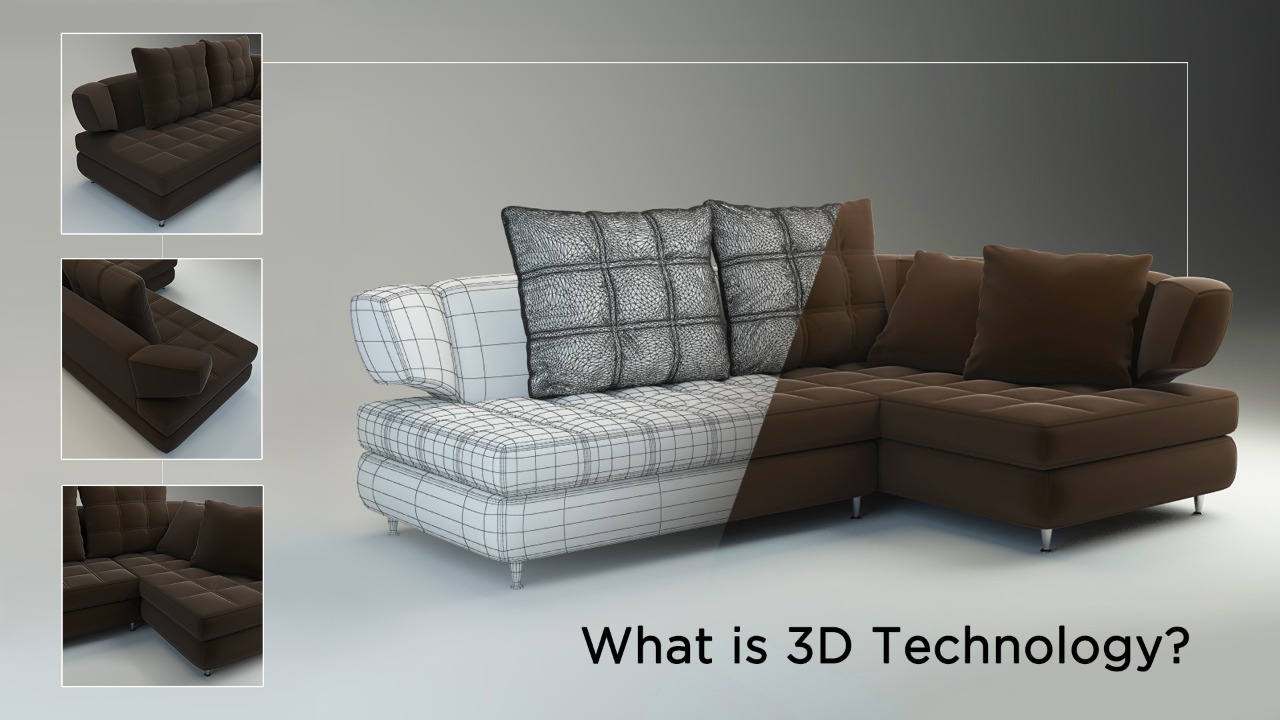
Today we all live in a visual world and modern technologies have taken visualization to another level.
At the most basic level, 3D is part of computer graphics, that involves creating, analyzing, and displaying three-dimensional objects in a two-dimensional space like your desktop screen. Generally, 3D technology is used to create a photorealistic digital prototype of a real-life object such as a building, car, or even a tree. Most of the product images that you come across on popular eCommerce sites like Amazon are created using 3D technologies.
Importance of 3D Visualization
There are various significances associated with 3D that encourage modern businesses to embrace it. The common and most important reasons include enhanced visual experience, greater quality and accuracy of images, lesser costs and time compared to conventional practices, and of course, scalability. 3D allows you to turn your amazing product ideas into a visible form that you can not just see but also analyze and improve, before actually creating it. 3D technologies are being used in various industries such as construction – architectural buildings, infrastructure projects, interior, and exterior designing, manufacturing, gaming, eCommerce, etc.
Types of 3D technologies
3D Modelling:
3D modeling is the process of creating a virtual three-dimensional model of a product using 3D software applications. Here models are created in CAD software and visually represented as a two-dimensional image using various visualization techniques. Products of high quality and complex structure are created with desired geometry, shape, and color using 3D modeling software like 3ds Max, Autodesk Maya, etc.
3D Rendering:
3D rendering is simply converting a three-dimensional model in your computer into a two-dimensional image. 3D rendering allows you to create digital, photorealistic snapshots of products using the desired color and environment and then visualize how they look in the real world. Based on the visualization, the model is further improved or customized to get closer to the ideal product requirement.
Computer Generated Imagery (CGI):
CGI is the process of creating photorealistic images or animated visuals using computer graphics applications. The technology is widely used in many industries such as advertising, eCommerce, architecture, film, etc. CGI is a time-efficient alternative to product photography, where the outcome is more realistic and economical. Most of the images used by online fashion stores are created using CGI.
3D Animation:
It’s difficult to imagine static images becoming animated and start moving. However, 3D animation technology makes transforming still images into moving pictures possible in a simulated 3D setting. 3D animation doesn’t need real objects instead it uses product modeling. A 3D designer knows how to create a photo-realistic animation that will capture the attention of the audience. This technology is widely used by the film and gaming industry.
3D Viewer:
A 3D viewer is a revolutionary tool that helps prospects view your products in a life-like environment and customize them as per their preference. It enables prospects to see high-quality, 360-degree product visuals. .360-degree rotatable 3D product images enable customers to get a well-rounded perspective of your products. Customers can view your products from all angles and zoom in to get a better idea of the textures and other details, helping them make the right choice.
Augmented Reality (AR):
For most people, Augmented Reality needs no introduction. An ordinary eCommerce shopping experience for a furniture store will involve customers viewing and analyzing static product images and guessing how a particular furniture piece, for example, a sofa would look in their home. To turn this ordinary experience into an extraordinary one, you can leverage AR capabilities to enable customers to virtually view the sofa in their surroundings and determine whether it goes well in their space or not, thereby helping them make informed buying decisions.
Recent research revealed that the global 3D mapping and modeling market size is expected to grow to USD 6.5 billion by 2023, at a Compound Annual Growth Rate (CAGR) of 18.0% during 2018–2023. The increasing need for VFX technology in movies, 3D applications in games, and the use of 3D imaging in mapping are major growth factors for the 3D mapping and modeling market.
Have you already jumped on the 3D bandwagon and are still planning to take that leap of faith? Do leave your thoughts in the comments and feel free to ask questions. We’re all ears,